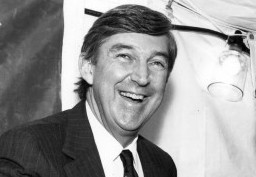The jewel in the Bay Area’s tennis crown will soon vanish.
The region’s premiere tennis event, the SAP Open, will be moving to Memphis to fill the void created by the move of that city’s tournament to Rio in 2014.
After 123 years in the Bay Area, America’s second-oldest tournament became the victim of an invisible vortex of forces: globalization, a dip in American men’s tennis, new tournament tiers, imperious player attitudes and maybe just plain old age.
After all, the grand old tournament began in 1889. For decades, it was simply The Pacific Coast Championships, a splendid, intimate and very proper amateur affair played at the cozy Berkeley Tennis Club. Then came the tennis boom and Open tennis. The tennis seas rose, and the once-modest tournament morphed into quite the major league event, the Transamerica Open, a must-see San Francisco happening with a certain urbane buzz.

Sure, for years it was played in the Cow Palace (which suffered from occasional leaks and odd bovine scents), before it came downtown to San Francisco’s Civic Center, where panhandlers pleaded for spare quarters after the quarterfinals. In town, one was likely to see quite a sparkling cast of characters: the singular Bjorn Borg, elegant Arthur Ashe, nasty Ilie Nastase, somber Ivan Lendl or McEnroe and Connors, Courier and Chang or Sampras and Agassi. With world-class talent, rabid rants, slash-and-burn rivalries, charismatic showmen and gala draw ceremonies atop skyscrapers, this was a bit of tennis heaven by the Bay. Fans came out in droves, all was good.
The thriving domain was overseen by the beneficent owner/Tournament Director Barry MacKay, a beloved, re-assuring tennis good-old-boy from the hard streets of Sausalito who was tennis’ answer to promoter Bill Graham. Wannabes and name droppers, captains of industry and society ladies from all the right places descended. Bad boy and local hero Brad Gilbert “won ugly,” but the picture was pretty. Yes, this city was built on rock ‘n roll, but still tennis mattered.
But slowly, often imperceptively, times changed.
• Players became peacocks with a sense of entitlement: “Maybe I’ll show up in ’Frisco, maybe not. Talk to my agent, that guarantee isn’t big enough. No way will I do that interview.”
• A dreamy sponsor, San Francisco’s Transamerica Corporation, was sold to a European company, and the great (post Stefan Edberg) European Grand Slam champions from Becker and Federer to Nadal and Djokovic, barely gave the tourney a second look. While far from minor league, the tournament lost a dose of its luster. Rotterdam, played the same week, was far bigger. And as for California tennis, the gold rush headed for Indian Wells, with its warm sun, big money, Hollywood glitz and hefty ranking points.
San Francisco’s tournament – now played in February instead of September – headed for the tank, San Jose’s Shark Tank. The field was thinned, and for years a procession of dedicated men put the tournament on their shoulders. First McEnroe, with all his mayhem, was the man to see. Then he passed the baton to kid Agassi, who in turn gave way to Andy Roddick. Barry MacKay cashed in his chips and sold his event to an Ohio company and eventually retired. The new managers were good, professional and thorough. But the tourney’s new Silicon Valley suburban feel was missing something. A certain snazzy, urban tone vanished. The SAP’s new home – the Shark Tank – was fine for hockey’s men of teal, but it lacked a certain tennis feel. Hospitality suites, concessions and parking, along with a string of computer company sponsors (Sybase, Siebel and SAP) all generated revenue. But sellouts were few.
The tournament where Tilden, Budge, Kramer and Laver once stroked winners was now being won by the Stepaneks, Verdascos and Raonics of the world. Banner headlines were few, front-page coverage uncertain.
Still, while Bay Area tennis fans were no longer crazy-in-love with the tournament, it was held in high esteem.
But it just wasn’t the same. The thrill was gone. And now the tournament itself will be gone. We will miss it. But maybe, just maybe, a tennis fan or two will whisper a little prayer in hopes that some mogul or dreamer will fill the void and plop a bright new jewel in the crown of Bay Area tennis.



















